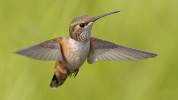Took my first ever flight yesterday with a couple of minor issues with the FAA via Air Control (LAANC).
The area was listed at 400ft. The app automatically set my request at Zero with up to 200ft in the green. So I requested 400ft as allowed by the area map and was immediately denied with a message that prior approval 60 days in advance was needed to fly above 200 ft. That was odd.
Made a second request for 200ft and was immediately approved via app and text.
Changed the setting on the controller RTH at 193ft/max attitude 193ft.
Tried auto take off first…hovered for a minute than few up to 50ft. So where was that angry bee buzz I’ve been hearing about. The drone was surprising very quiet. There were people around and no one even looked in my direction.
The drone was very crisp easy to control. One could be as aggressive or smooth as your input on the sticks. Only issue was the yaw is very slow. I’ll have to find adjustments for that somewhere within the controller. If available.
The Drone is smaller than I initially thought. I only few it a few hundred feet away at less than 100 ft. Lost sight of it every time I looked at the controller. Of course I panicked (couldn’t see or hear the darn thing), but made no efforts to make emergency maneuvers with the sticks. The camera and map views kept me in check.
The last time I lost sight I hit the RTH…waited about a minute, looked up and there it was…landing exactly where it took off.
The second flight I took off in manual mode, flew at 40-100ft around obstacles (Trees/Poles/Tall building) trying out the avoidance system. Worked exactly as advertised but the warnings are very annoying to fly around the trees. Couldn’t see the drone amongst the trees…but the drone did warn of the presence of limbs and leaves. I was warned about what I couldn’t see via the camera. At one point I couldn’t proceed forward or up but had to back out. That’s a good thing.
Tried a few panorama photos and videos. Played with the manual camera settings and the 3X zoom. I was up there for a very long time. Never went above 100ft.
On low battery I got a RTH warning followed a few seconds later by a "Retuning To Home" voice notification. The drone was at 40ft at the time and about 200 yrds away. It did not rise to the 193ft RTH attitude. Stayed at 40 feet, maneuvered around a tall light pole, landed exactly where it took off from and shut off the motors. That was odd. I assumed it would rise to 193ft before retuning. Must be something I did in the setting.
What a joy to fly and watch land. Never knew a Drone could be this easy to fly and control. This is a keeper.
The area was listed at 400ft. The app automatically set my request at Zero with up to 200ft in the green. So I requested 400ft as allowed by the area map and was immediately denied with a message that prior approval 60 days in advance was needed to fly above 200 ft. That was odd.
Made a second request for 200ft and was immediately approved via app and text.
Changed the setting on the controller RTH at 193ft/max attitude 193ft.
Tried auto take off first…hovered for a minute than few up to 50ft. So where was that angry bee buzz I’ve been hearing about. The drone was surprising very quiet. There were people around and no one even looked in my direction.
The drone was very crisp easy to control. One could be as aggressive or smooth as your input on the sticks. Only issue was the yaw is very slow. I’ll have to find adjustments for that somewhere within the controller. If available.
The Drone is smaller than I initially thought. I only few it a few hundred feet away at less than 100 ft. Lost sight of it every time I looked at the controller. Of course I panicked (couldn’t see or hear the darn thing), but made no efforts to make emergency maneuvers with the sticks. The camera and map views kept me in check.
The last time I lost sight I hit the RTH…waited about a minute, looked up and there it was…landing exactly where it took off.
The second flight I took off in manual mode, flew at 40-100ft around obstacles (Trees/Poles/Tall building) trying out the avoidance system. Worked exactly as advertised but the warnings are very annoying to fly around the trees. Couldn’t see the drone amongst the trees…but the drone did warn of the presence of limbs and leaves. I was warned about what I couldn’t see via the camera. At one point I couldn’t proceed forward or up but had to back out. That’s a good thing.
Tried a few panorama photos and videos. Played with the manual camera settings and the 3X zoom. I was up there for a very long time. Never went above 100ft.
On low battery I got a RTH warning followed a few seconds later by a "Retuning To Home" voice notification. The drone was at 40ft at the time and about 200 yrds away. It did not rise to the 193ft RTH attitude. Stayed at 40 feet, maneuvered around a tall light pole, landed exactly where it took off from and shut off the motors. That was odd. I assumed it would rise to 193ft before retuning. Must be something I did in the setting.
What a joy to fly and watch land. Never knew a Drone could be this easy to fly and control. This is a keeper.













